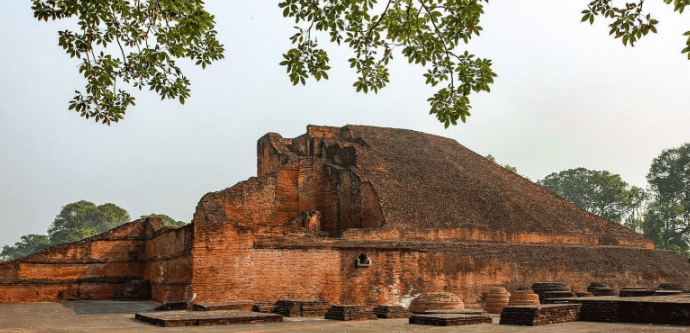In the hallowed grounds of Bihar, where Prime Minister Modi recently inaugurated the modern Nalanda University, lies the evocative ruins of its ancient namesake, the Nalanda mahavihara. This venerable institution, a beacon of knowledge in the ancient world, has its rich history chronicled primarily through the meticulous accounts of Chinese and Tibetan pilgrims.
Xuanzang’s Odyssey: A Glimpse into Nalanda’s Golden Age
Foremost among these chroniclers is Xuanzang, the intrepid 7th-century Chinese pilgrim who embarked on a scholarly pilgrimage across India. His five-year sojourn at Nalanda, under the tutelage of the esteemed abbot Silabhadra, yielded vivid descriptions of the mahavihara’s grandeur.
Xuanzang’s writings, while embellished with a touch of hyperbole, provide invaluable insights into Nalanda’s vibrant intellectual life. He paints a captivating picture of the mahavihara’s bustling courtyards, adorned with “pearl-red pillars, carved and ornamented,” and its “deep, translucent ponds” adorned with blooming lotuses. He speaks of the “fairy-like turrets” that pierced the sky and the “upper rooms [that] towered above the clouds.”
Yijing’s Meticulous Observations: A Window into Monastic Life
Another Chinese pilgrim, Yijing, offers a more granular perspective on life at Nalanda. His meticulous observations delve into the minutiae of monastic routines, from the daily bathing rituals to the intricate rules governing attire and conduct. Yijing’s writings also provide a detailed architectural blueprint of the monks’ living quarters, revealing the spatial organization and communal living arrangements within the viharas.
Royal Patronage and Gradual Decline: The Ebb and Flow of Nalanda’s Fortunes
Nalanda’s magnificence was sustained by the patronage of wealthy merchants and benevolent kings, transcending religious boundaries. The Gupta dynasty, followed by Harshavardhana of Kannauj, played a pivotal role in nurturing the mahavihara’s intellectual and spiritual growth. However, the rise of competing monasteries and socio-political shifts gradually eroded Nalanda’s preeminence.
The advent of Islam as a dominant trading religion and the resurgence of Brahmanical influence within India contributed to the decline of Buddhism and, consequently, the mahavihara’s prestige. While the invasions of figures like Bakhtiyar Khalji undoubtedly played a role, their impact has been overstated in popular narratives. The true cause of Nalanda’s decline lay in the broader waning of Buddhism in the subcontinent, coupled with dwindling patronage and a gradual erosion of its intellectual vigor.
Key Takeaways:
- The history of Nalanda mahavihara is primarily documented through the accounts of Chinese and Tibetan pilgrims.
- Xuanzang’s writings offer a vivid, albeit embellished, portrayal of Nalanda’s grandeur and intellectual vibrancy.
- Yijing’s meticulous observations provide a detailed glimpse into monastic life and daily routines at Nalanda.
- Royal patronage, particularly from the Gupta dynasty and Harshavardhana, played a crucial role in Nalanda’s development.
- The decline of Nalanda was a multi-faceted process, driven by socio-political changes, the rise of competing monasteries, and the gradual waning of Buddhism in India.
Advanced Vocabulary and Meanings
| Vocabulary | Meaning |
|---|---|
| Hallowed | Made holy; consecrated. |
| Evocative | Bringing strong images, memories, or feelings to mind. |
| Venerable | Accorded a great deal of respect, especially because of age, wisdom, or character. |
| Intrepid | Fearless; adventurous (often used for rhetorical or humorous effect). |
| Sojourn | A temporary stay. |
| Granular | Detailed; having a fine grain. |
| Minutiae | The small, precise, or trivial details of something. |
| Preeminence | The fact of surpassing all others; superiority. |

Sunil Garnayak is an expert in Indian news with extensive knowledge of the nation’s political, social, and economic landscape and international relations. With years of experience in journalism, Sunil delivers in-depth analysis and accurate reporting that keeps readers informed about the latest developments in India. His commitment to factual accuracy and nuanced storytelling ensures that his articles provide valuable insights into the country’s most pressing issues.



